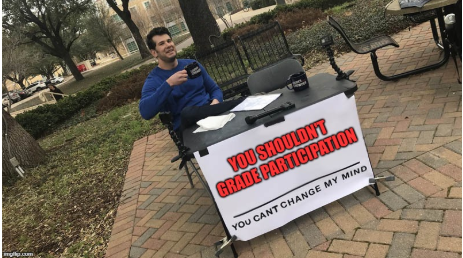Let me ask you a question. Are you thinking about what could right or what could go wrong up there? Ah, that grin leads me to believe it’s the latter one. That’s normal but that’s also the problem. So many speakers focus on what could wrong and forget to concentrate their energy on making the things that they can actually control go well.
I’ll give you an example. Are you worried about the technology messing up at that critical point in your talk, maybe when you want to show a video? Ok, did you come in here earlier and test it out? You did? Awesome, that’s one less thing to worry about. Put it out of your mind. Are you worried about forgetting what you were planning to say on Slide 5? Do you think anyone here knows what you were planning to say? Trust me, we don’t. If you forget something you were planning to say, skip it. We’ll probably never know unless you announce it to us. “Ummm, sorry everyone, I forgot what I was going to say here.” Yeah, don’t do that. Don’t apologize and don’t make excuses.
Some of us will be able see that you’re a little nervous and if we can’t then that’s great, but don’t tell us. Let us believe you are confident, and prepared, and knowledgeable about your topic, and here to share something that will be useful for us. See, that’s what you need to be focusing on. Even if you don’t feel confident and prepared, ACT confident and prepared. You may not be THE biggest expert about your topic in the world but you should be one of the most knowledgeable people on it in this room. Act like it.
Finally, your audience is here because we thought you would be able to offer us something beneficial. We’re sitting here patiently with our cell phones in our pockets (ok, well, most of us) waiting for you to share something that you know and we didn’t. It doesn’t have to be earthshattering but it would be nice to leave this room after 10 minutes or thirty minutes or ninety minutes thinking about something we do regularly but in a slightly different way. Now, if we can be truly inspired, well, that’s even better but 99% of the people in this room would settle for “Huh, I never thought about that.” or “If I changed X to Y, I could probably use that next week.” So relax.
Trust me, every single person in this room wants you to do well up there. No one is cheering for you to mess up. Think positive. Focus on us, not your notes or your slides. Make eye contact. Smile. Speak with energy and passion but don’t yell at us. You’ll calm down after the first few minutes, everybody does. But that means those first few minutes are key. Look at us when you introduce yourself. Tell us what you plan to share with us today and everything else will fall into place. Sound good? Ok, have a great time up there and enjoy the spotlight.



 RSS Feed
RSS Feed